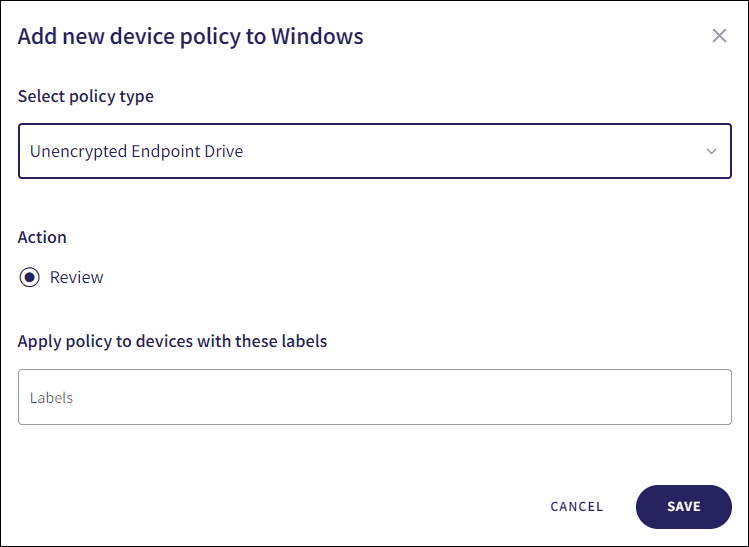Unencrypted Endpoint Drive
An unencrypted endpoint drive on a Windows or macOS device stores data without encryption, making it vulnerable to unauthorized access if the device is lost or stolen.
Creating a new Unencrypted Endpoint Drive policy
To create a new Unencrypted Endpoint Drive policy:
- Access the Device Posture page .
-
Select
+ ADD
:

-
Select
Add to Windows
or
Add to macOS
:

Coro displays the Add new device policy dialog.
-
Select
Unencrypted Endpoint Drive
from the
Select policy type
dropdown:

-
Select the policy
Action
:
- Review : Coro performs no auto-remediation, and raises a ticket classified as requiring review. The ticket remains open until either the admin user closes it manually or the vulnerability is observed by the Coro endpoint agent as being resolved.
note
Review is the only available action for this policy type.
-
To apply the policy to specific device groups, select device labels from the
Labels
dropdown:

-
To create the policy, select
SAVE
.
note
When encryption is disabled on a device drive, Coro creates an Unencrypted endpoint drive ticket.
To view the policy, select the dropdown next to Unencrypted Endpoint Drive on the Device Posture page.
Coro displays the following policy details:
- The applicable policy device labels.
-
The selected policy action.

For more information on Windows device drive encryption, see Encrypting endpoint device drives.